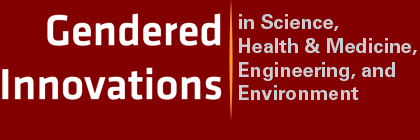This checklist is intended for planners, designers, researchers, project managers, city officials, and planning organizations as they incorporate sex and gender analyses into urban planning and design. It provides key questions and recommendations to consider in the various steps of the planning process.
This checklist is designed to be used in conjunction with Gendered Innovations methods, as indicated below. Case studies related to this checklist are: Housing and Neighborhood Design; and Quality Urban Spaces; and Smart Mobility.
RECOMMENDATIONS FOR PLANNING PROCESSES
Basic knowledge and data collection
- 1. Have sex-disaggregated data and gender, socioeconomic, or other indicators been collected in ways that allow for international comparisons, ensuring consistency and continuity of statistical series? See Methods: Analyzing Sex; Analyzing Gender; Analyzing how Sex and Gender Interact; Intersectional Approaches.
- 2. Are there unconscious sociocultural assumptions built into data collection, data representation, methodology, or underlying concepts? See Methods: Rethinking Concepts and Theories; Rethinking Language and Visual Representations. See especially Case Study: Smart Mobility.
- 3. Have complementary statistical and qualitative techniques been integrated into research design? All techniques should foster the equal participation of women, men, and gender-fluid individual actors ethnic groups, as well as relevant socioeconomic and diverse age groups.
- 4. Is the research team sufficiently interdisciplinary to address the multiple sex, gender, and intersectional dimensions and complexity of urban planning?
- 5. Are the language and iconography used in the project inclusive and gender-sensitive? See Method: Rethinking Language and Visual Representations.
Participation in Planning Process
- 6. Have you taken appropriate steps to incorporate gender and other sociocultural perspectives in participatory processes? Have you created structures for dialogue between public administrations, private sector, non-profit organizations, and citizens—from initial and intermediate stages of planning to project implementation. See Method: Participatory Research and Design.
- 7. Is child or elder care available for meetings where the public is encouraged to attend? Do meeting times and places take into consideration both working and care schedules? Is the process open so that groups traditionally reluctant to participate can articulate their needs and interests?
- 8. Have you promoted awareness among and recruited both diverse participate in decision-making about equality in urban development and management?
- 9. Is the language used appropriate for all educational levels, ages, socio-economic status, and disabilities? See Method: Intersectional Approaches.
Budgets and Fiscal Issues
- 10. Have gender and other sociocultural issues been considered in long- and short-term project and planning goals?
- 11. Is investment tied to sustainable goals?
Intergovernmental Coordination
- 12. Have policies, plans, and projects taken into consideration other convergent public policies, such as public services, health, aging, transportation, and migration?
Evaluation and Monitoring
- 13. Do projects include strategic environmental-, economic-, social-, and gender-impact assessments?
RECOMMENDATIONS FOR SPECIFIC FIELDS OF PLANNING
Proximity and Mixed Uses
- • Promote mixed-use developments at all scales, from regional to neighborhood.
- • Ensure that higher density urban nodes and care-related facilities (such as hospitals) are linked to transit systems.
- • Ensure that neighborhoods are well served by facilities supporting daily activities, such as healthcare, education, sports, leisure, and shopping.
- • Develop a variety of specific facilities for child and elder people care.
- • Promote employment options in locations accessible to residential areas.
- • Ensure that essential services are integrated into employment areas.
Transport
- • Redefine public transportation infrastructure and routes that consider trip-chaining and commuting patterns for users who combine employment, household, and caring duties. See Case Study: Smart Mobility.
- • Analyze sex and gender in relations to ergonomics and safety in the design of vehicles, routes, stations, and pedestrian paths leading to them. See Method: Rethinking Standards and Reference Models.
- • Develop transport services suited to the specific needs of women, gender-diverse individuals, the young, elderly, disabled, and other groups.
Public Space and Safety
- • Monitor, plan, and implement specific measures for the different safety needs of users in public space design and maintenance, using gender aware methods as developed in Toronto and Montreal.
Housing
- • Explore pilot projects for new housing typologies and their surrounding public spaces. Housing designs should address the needs of working parents and older people, and integrate common facilities as well as provide flexible and undetermined-use spaces.
- • Ensure a mixed and diverse stock of housing typologies, tenure regimes, and prices.
Educational, Health, Commercial, Leisure and Other Facilities
- • Consider users needs and desires with respect to family care as well as the specific needs of the elderly and people with different degrees of functional ability in the design of community facilities.
Works Cited
Adapted from Sánchez de Madariaga, I. (2004). Urbanismo con Perspectiva de Género. Sevilla: Fondo Social Europeo – Junta de Andalucía.





